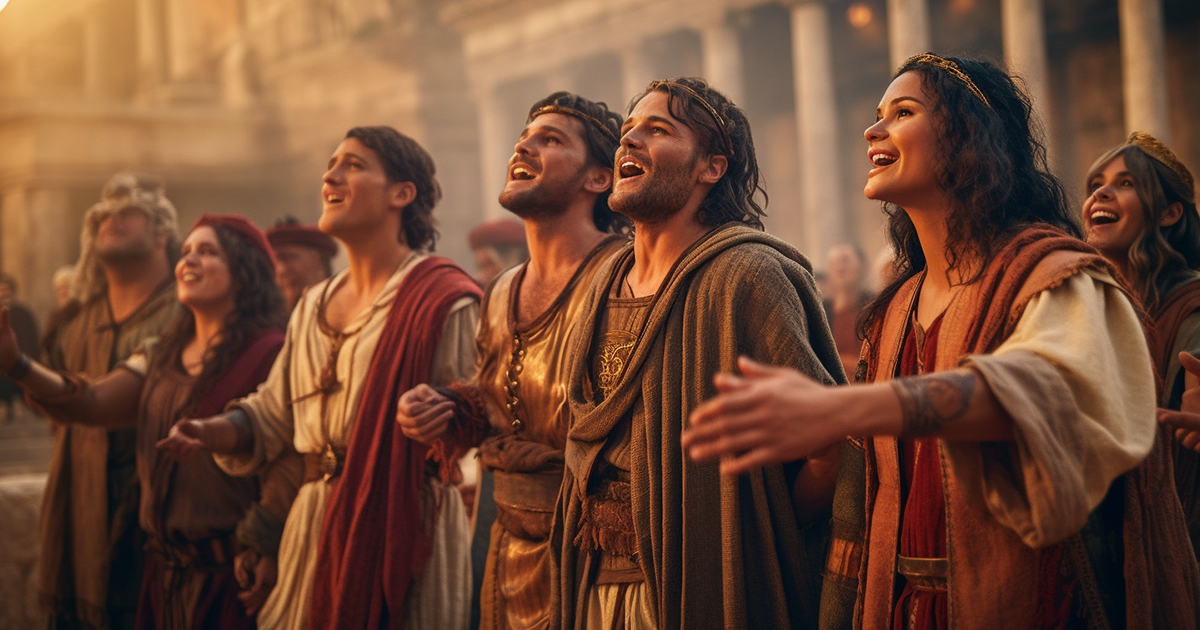Introduction:
Delving into the vibrant and varied cultural tapestry of ancient Rome unveils more than just its imposing architecture and political prowess. The Romans made a lasting impact on human civilization through their contributions to literature, philosophy, and music. Among their cultural heritage is the world of music, offering a glimpse into the emotions and beliefs of ancient Romans. The soundscape of ancient Rome mesmerizes us with a blend of melody, rhythm, and significance, transporting us back to a time when music reverberated through the streets, theaters, and majestic halls of the Eternal City.
Exploring the Array of Musical Instruments:
To grasp the sounds of ancient Rome, we must first familiarize ourselves with the instruments that adorned their musical ensembles. Romans embraced a wide variety of instruments, some native and others borrowed from different cultures. The tibiae, also known as Roman pipes, emerged as a popular wind instrument, while the lyre, a plucked string instrument, held deep cultural significance. The tuba, similar to a trumpet, resonated with its deep tones, while the cithara, a larger version of the lyre, produced delicate sounds.
Diverse Musical Genres and Performances:
The musical landscape of ancient Rome comprised a plethora of genres, each with its own distinct purpose and context. The tibicines, or pipe players, played a vital role in religious ceremonies and processions, filling sacred spaces with haunting melodies. Theatrical performances featured a variety of musical accompaniments, with the aulos, a double-reed instrument, providing a lively and rhythmic backdrop to actors’ presentations. In more intimate settings, small groups of musicians would entertain guests during banquets, evoking an atmosphere of elegance and sophistication.
The Greek Influence on Music:
The Romans deeply admired Greek culture, including its music. Greek traditions profoundly influenced Roman musical styles, resulting in a fusion of techniques and expressions. Roman composers adapted and modified Greek musical modes, known as the harmoniai, to align with their preferences and cultural identity. This amalgamation created a rich tapestry of melodies where the grandeur of Greece intertwined with the unique Roman spirit.
The Social Power of Music:
Music played a significant role in Roman society, serving as entertainment, a mode of religious devotion, and a medium for conveying political messages. Public performances were integral to civic life, with musicians and dancers taking the spotlight during festivals and triumphal processions. Music also facilitated social interactions and emotional release in private gatherings. Its impact was far-reaching, capable of stirring emotions, fostering patriotism, and influencing public sentiment.
The Enduring Legacy of Roman Music:
Though the exact melodies of ancient Roman music have faded with time, fragments of their musical traditions have survived through written accounts and archaeological discoveries. Roman musical notation, represented by neumes, offers glimpses into the melodic structures and rhythmic cadences that once echoed through ancient Rome. Today, scholars and musicians strive to revive and reinterpret this ancient musical legacy, breathing life into the whispers of a forgotten era.
Concluding Thoughts:
Embarking on a musical journey through ancient Rome unveils a hidden treasure trove. It uncovers the intricate interplay of music, culture, and society in one of history’s most remarkable civilizations. The music of ancient Rome, with its diverse instruments, genres, and influences, encapsulated the essence of Roman identity. Embracing this musical heritage provides profound insights into the human experience and the timeless ability of music to transcend eras, connecting us to our shared history.
